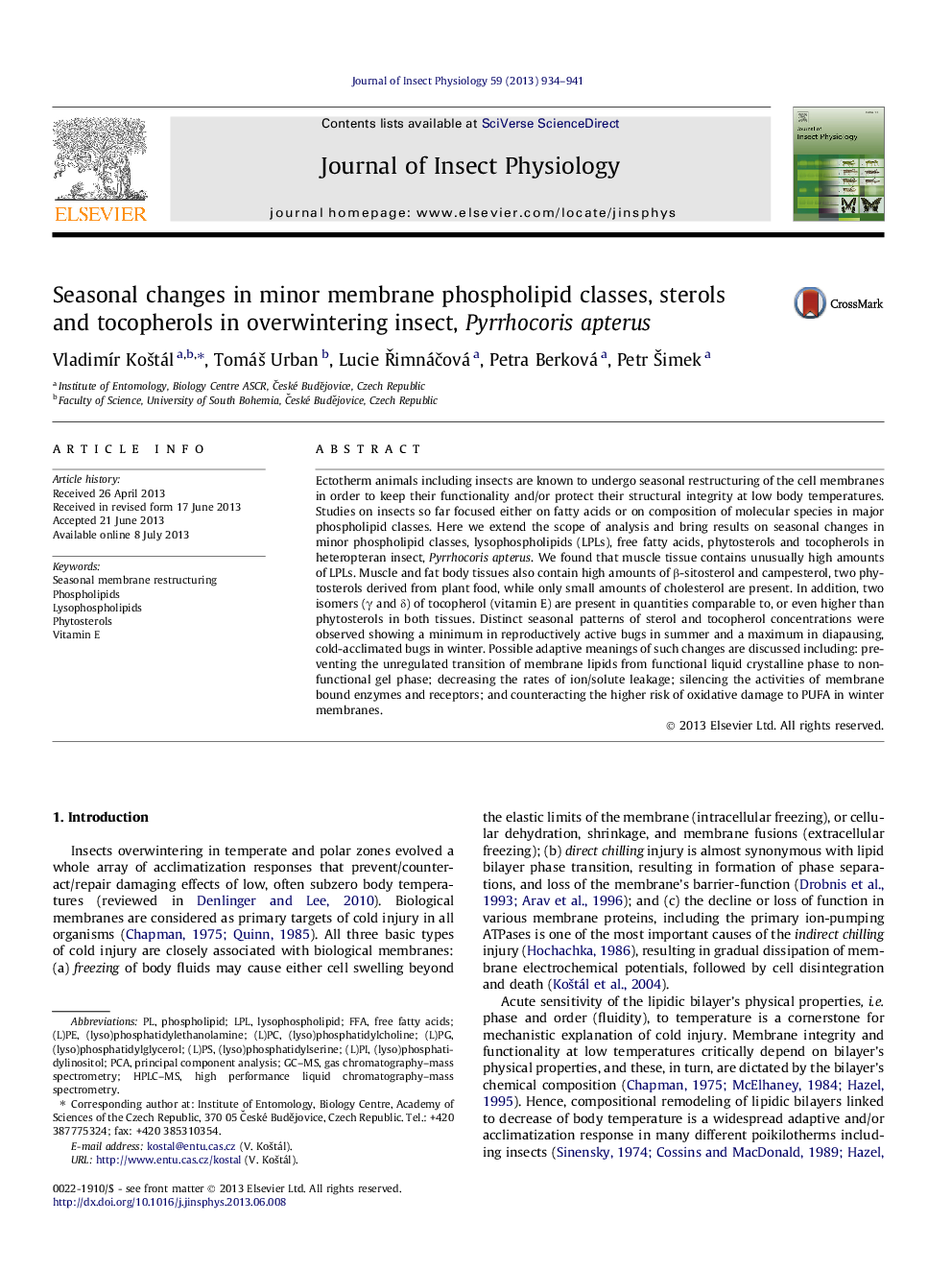| کد مقاله | کد نشریه | سال انتشار | مقاله انگلیسی | نسخه تمام متن |
|---|---|---|---|---|
| 5921774 | 1165329 | 2013 | 8 صفحه PDF | دانلود رایگان |

- Seasonal changes in relative proportions of so far neglected lipid species were analyzed in insect membranes.
- Muscle tissue of Pyrrhocoris apterus contained very high relative proportions of lysophospholipids.
- Muscle and fat body tissues of P. apterus contained high proportions of phytosterols and tocopherols (vitamins E).
- Relative proportions of phytosterols and tocopherols displayed clear seasonal trends with maximum during autumn/winter.
Ectotherm animals including insects are known to undergo seasonal restructuring of the cell membranes in order to keep their functionality and/or protect their structural integrity at low body temperatures. Studies on insects so far focused either on fatty acids or on composition of molecular species in major phospholipid classes. Here we extend the scope of analysis and bring results on seasonal changes in minor phospholipid classes, lysophospholipids (LPLs), free fatty acids, phytosterols and tocopherols in heteropteran insect, Pyrrhocoris apterus. We found that muscle tissue contains unusually high amounts of LPLs. Muscle and fat body tissues also contain high amounts of β-sitosterol and campesterol, two phytosterols derived from plant food, while only small amounts of cholesterol are present. In addition, two isomers (γ and δ) of tocopherol (vitamin E) are present in quantities comparable to, or even higher than phytosterols in both tissues. Distinct seasonal patterns of sterol and tocopherol concentrations were observed showing a minimum in reproductively active bugs in summer and a maximum in diapausing, cold-acclimated bugs in winter. Possible adaptive meanings of such changes are discussed including: preventing the unregulated transition of membrane lipids from functional liquid crystalline phase to non-functional gel phase; decreasing the rates of ion/solute leakage; silencing the activities of membrane bound enzymes and receptors; and counteracting the higher risk of oxidative damage to PUFA in winter membranes.
Phytosterols and tocopherols (vitamins E) are abundant components of the membrane lipid complement in the adult Pyrrhocoris apterus. Figure depicts seasonal change of sterol and tocopherol composition in the fat body of the insects that were collected in the field during 2011.
Journal: Journal of Insect Physiology - Volume 59, Issue 9, September 2013, Pages 934-941